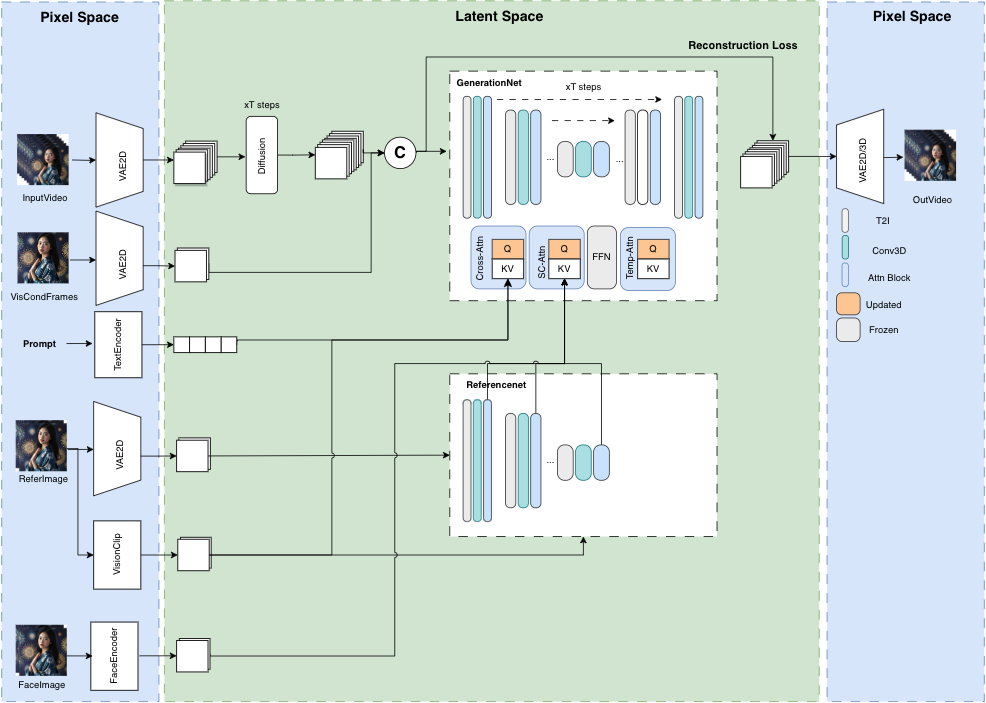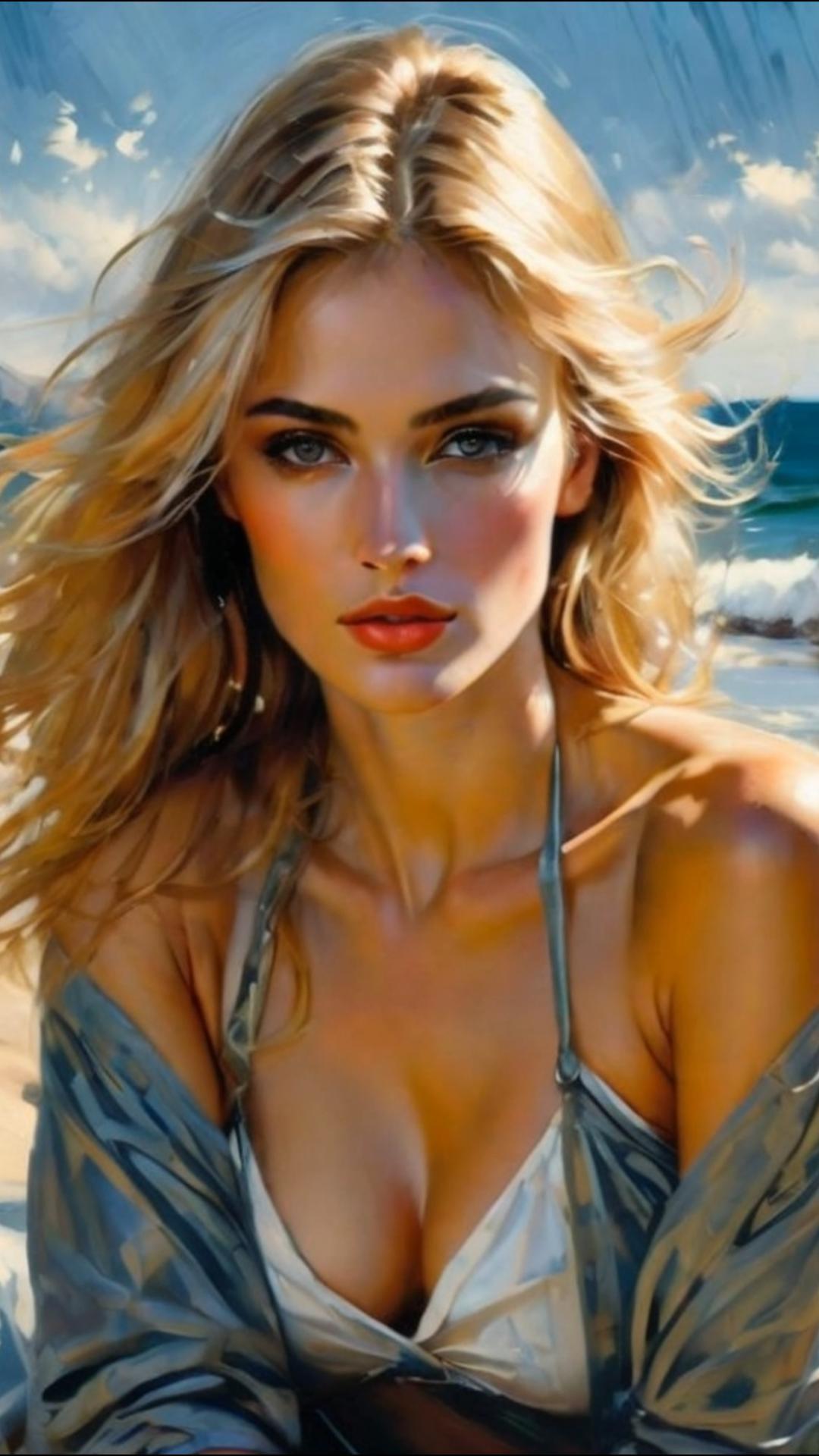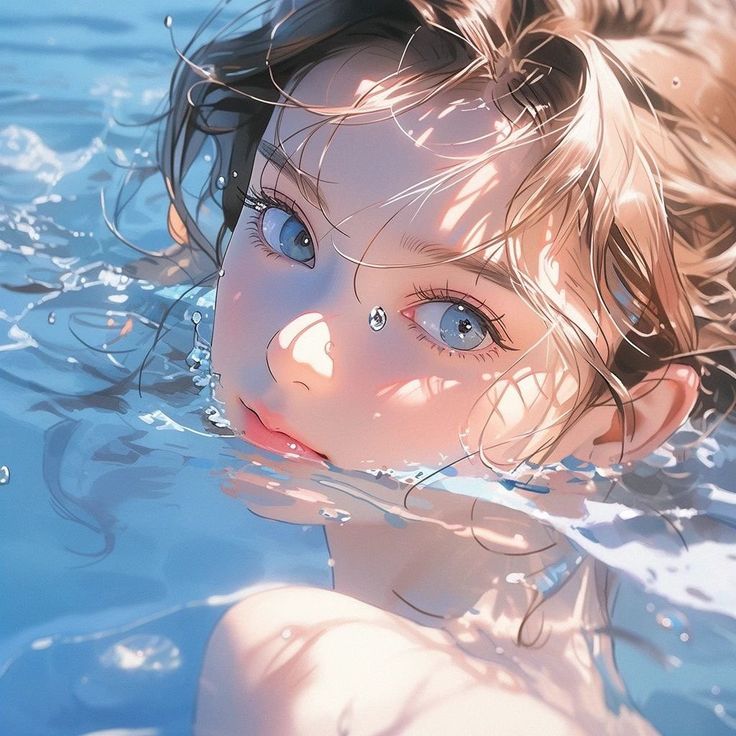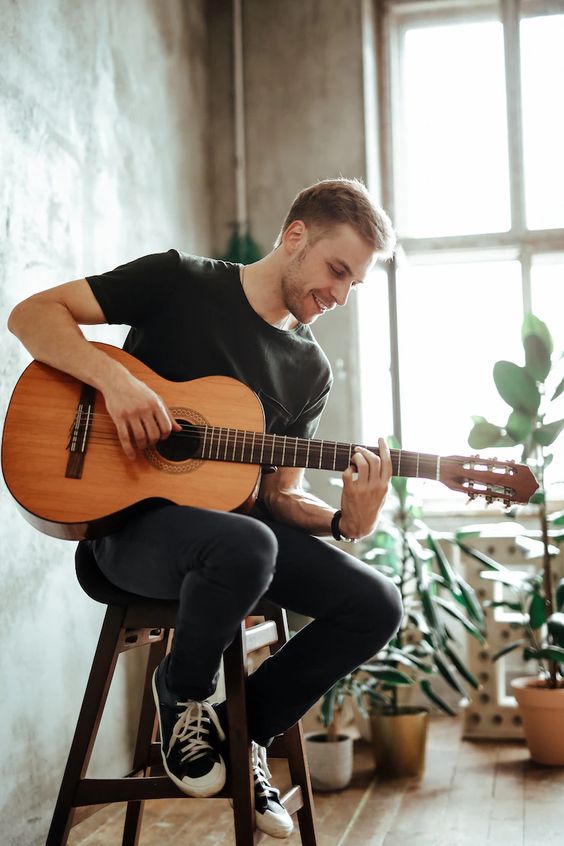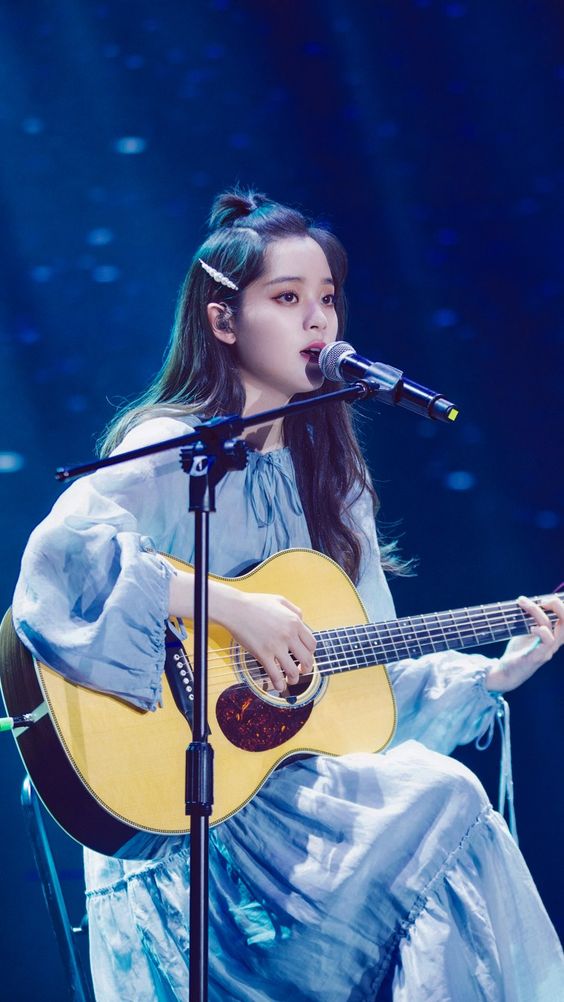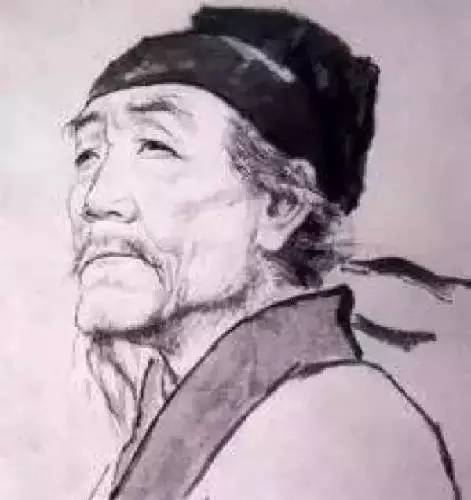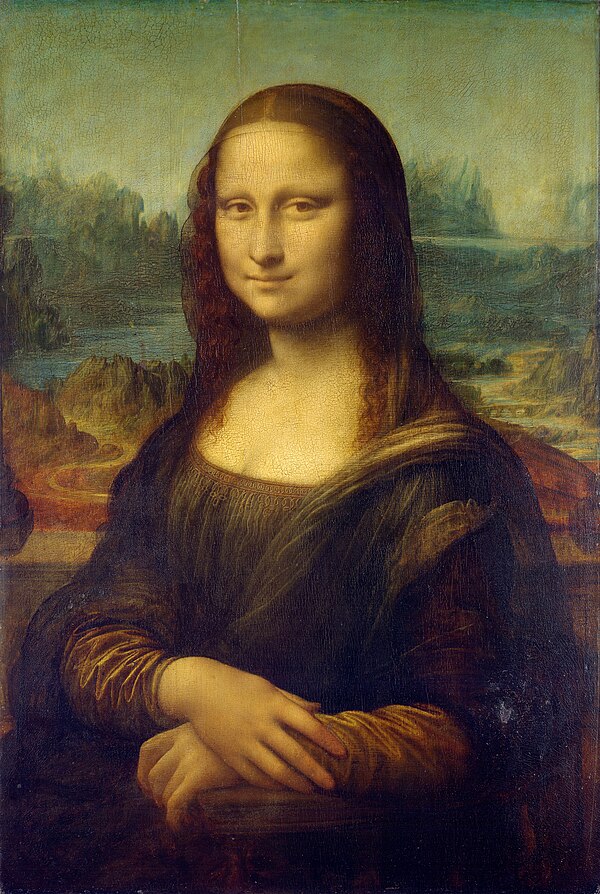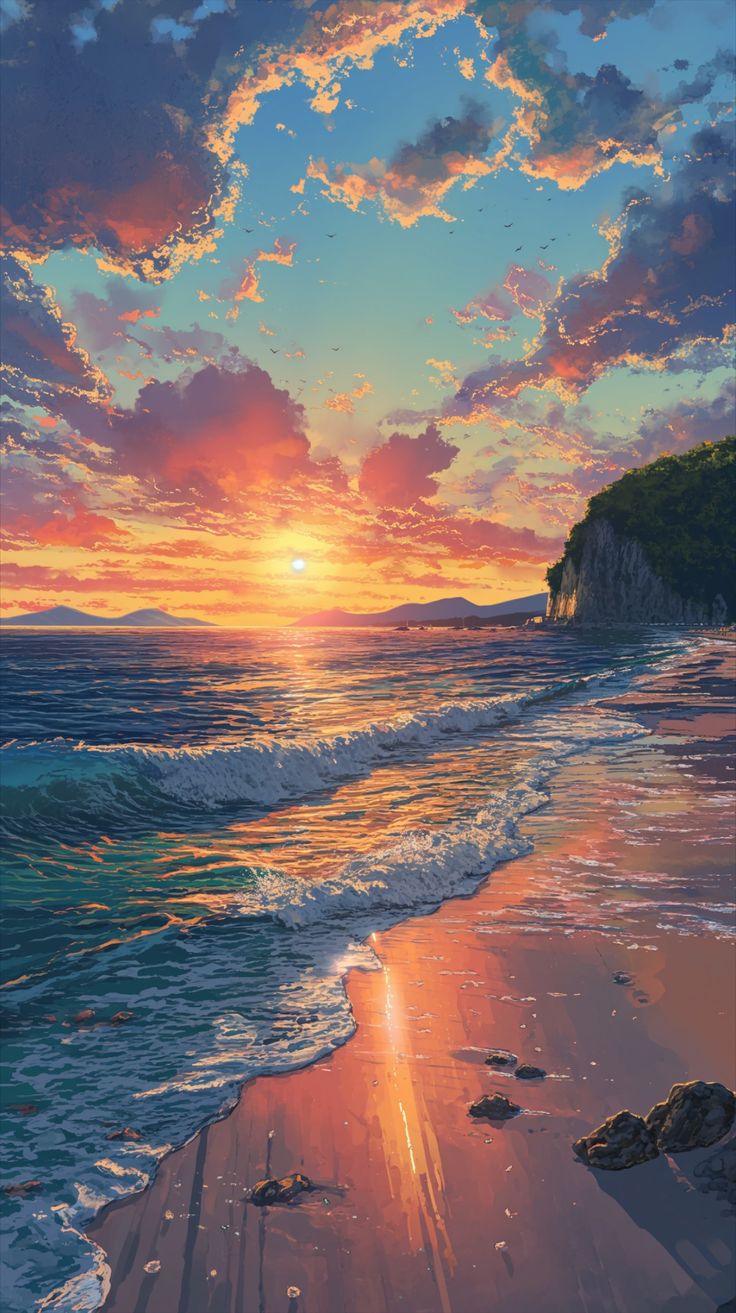MuseV: Infinite-length and High Fidelity Virtual Human Video Generation with Visual Conditioned Parallel Denoising
Zhiqiang Xia *,
Zhaokang Chen*,
Bin Wu†,
Chao Li,
Kwok-Wai Hung,
Chao Zhan,
Yingjie He,
Wenjiang Zhou
(*co-first author, †Corresponding Author, benbinwu@tencent.com)
Lyra Lab, Tencent Music Entertainment
github huggingface HuggingfaceSpace project Technical report (comming soon)
We have setup the world simulator vision since March 2023, believing diffusion models can simulate the world. MuseV was a milestone achieved around July 2023. Amazed by the progress of Sora, we decided to opensource MuseV, hopefully it will benefit the community. Next we will move on to the promising diffusion+transformer scheme.
Update:
- We have released MuseTalk, a real-time high quality lip sync model, which can be applied with MuseV as a complete virtual human generation solution.
- 🆕 We are thrilled to announce that MusePose has been released. MusePose is an image-to-video generation framework for virtual human under control signal like pose. Together with MuseV and MuseTalk, we hope the community can join us and march towards the vision where a virtual human can be generated end2end with native ability of full body movement and interaction.
MuseV is a diffusion-based virtual human video generation framework, which
- supports infinite length generation using a novel Visual Conditioned Parallel Denoising scheme.
- checkpoint available for virtual human video generation trained on human dataset.
- supports Image2Video, Text2Image2Video, Video2Video.
- compatible with the Stable Diffusion ecosystem, including
base_model,lora,controlnet, etc. - supports multi reference image technology, including
IPAdapter,ReferenceOnly,ReferenceNet,IPAdapterFaceID. - training codes (comming very soon).
musev_referencenet_pose: model_name ofunet,ip_adapterof Command is not correct, please usemusev_referencenet_poseinstead ofmusev_referencenet.
- [03/27/2024] release
MuseVproject and trained modelmusev,muse_referencenet. - [03/30/2024] add huggingface space gradio to generate video in gui
All frames were generated directly from text2video model, without any post process. MoreCase is in project, including 1-2 minute video.
Examples bellow can be accessed at configs/tasks/example.yaml
pose2video
In duffy mode, pose of the vision condition frame is not aligned with the first frame of control video. posealign will solve the problem.
| image | video | prompt |

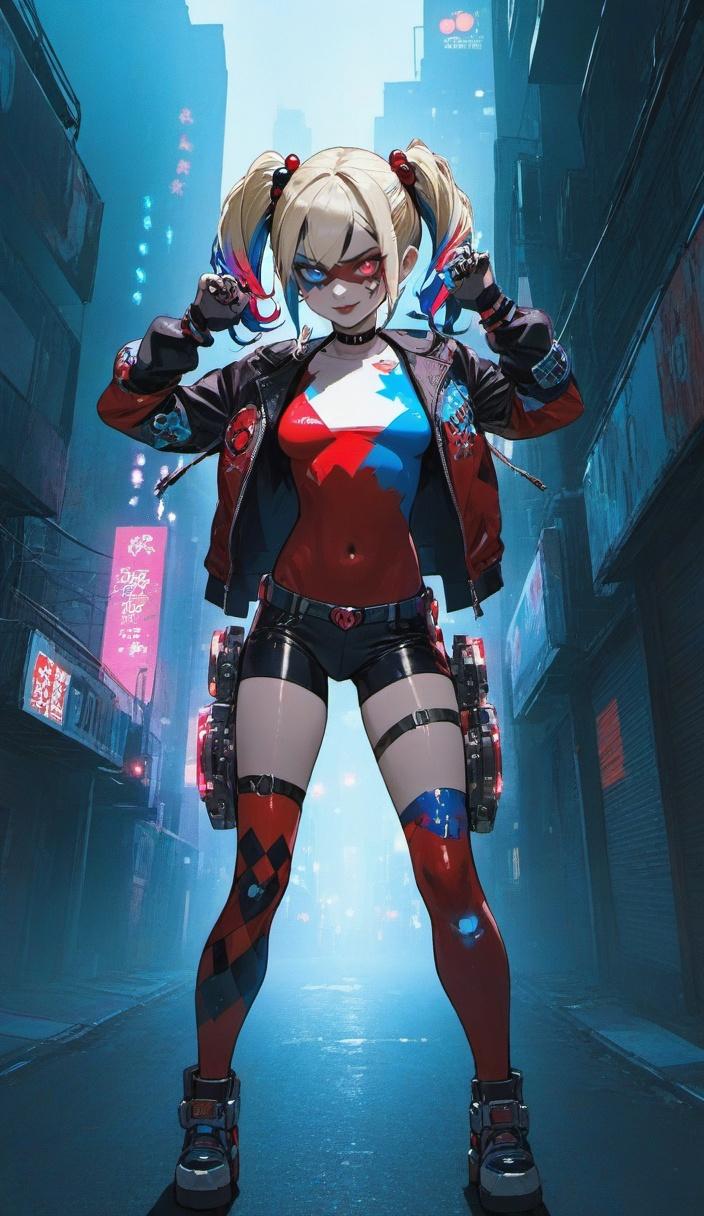
|
video1_plus.mp4 |
(masterpiece, best quality, highres:1) , a girl is dancing, animation |
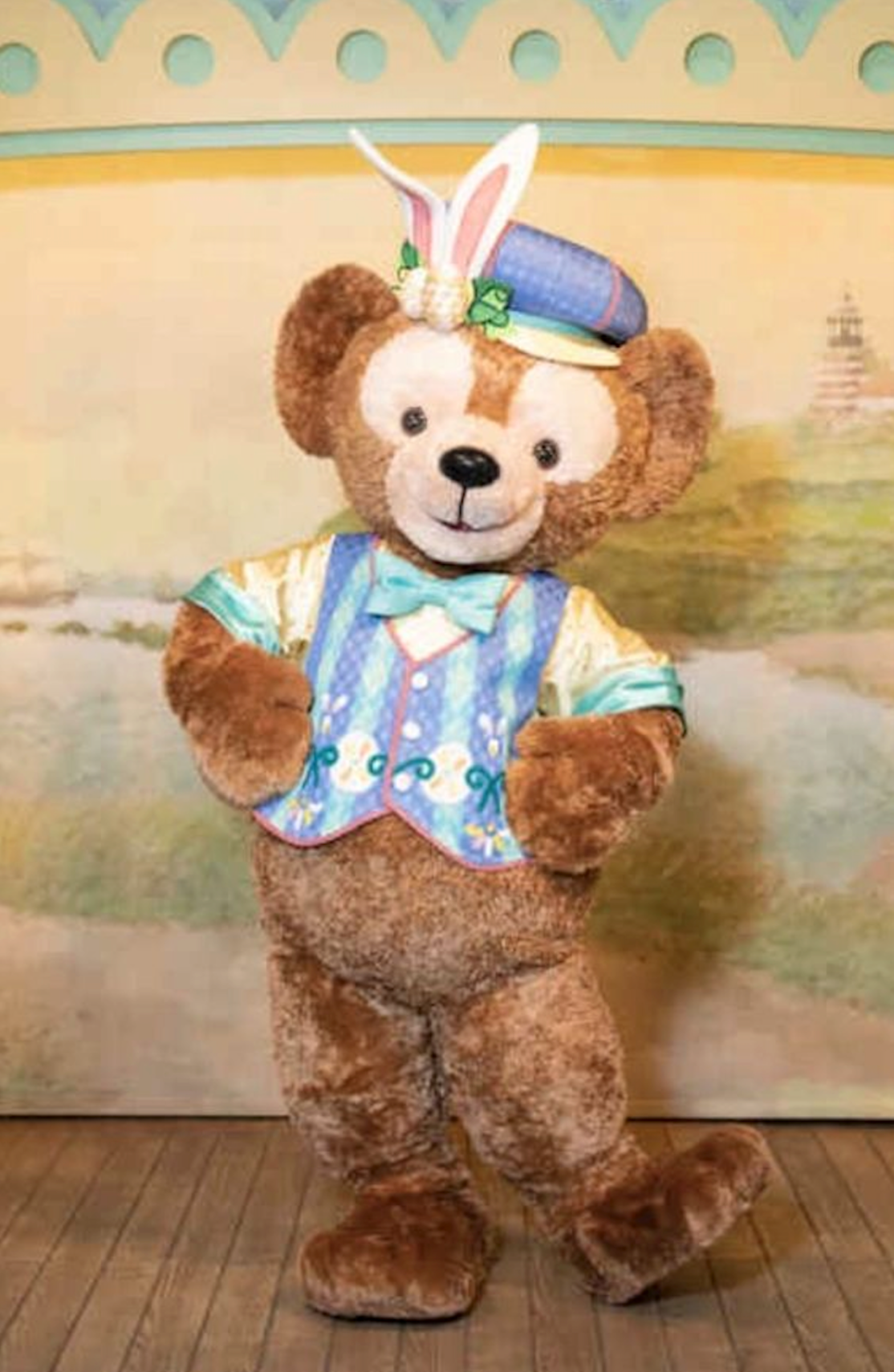
|
pose2video_bear_with_audio.mp4 |
(masterpiece, best quality, highres:1), is dancing, animation |
The character of talk, Sun Xinying is a supermodel KOL. You can follow her on douyin.
| name | video |
| talk |
sun02.mp4 |
| sing |
default.mp4 |
- technical report (comming soon).
- training codes.
- release pretrained unet model, which is trained with controlnet、referencenet、IPAdapter, which is better on pose2video.
- support diffusion transformer generation framework.
- release
posealignmodule
Prepare python environment and install extra package like diffusers, controlnet_aux, mmcm.
Thanks for the third-party integration, which makes installation and use more convenient for everyone. We also hope you note that we have not verified, maintained, or updated third-party. Please refer to this project for specific results.
netdisk:https://www.123pan.com/s/Pf5Yjv-Bb9W3.html
code: glut
You are recommended to use docker primarily to prepare python environment.
Attention: we only test with docker, there are maybe trouble with conda, or requirement. We will try to fix it. Use docker Please.
- pull docker image
docker pull anchorxia/musev:latest- run docker
docker run --gpus all -it --entrypoint /bin/bash anchorxia/musev:latestThe default conda env is musev.
create conda environment from environment.yaml
conda env create --name musev --file ./environment.yml
pip install -r requirements.txt
if not use docker, should install mmlab package additionally.
pip install --no-cache-dir -U openmim
mim install mmengine
mim install "mmcv>=2.0.1"
mim install "mmdet>=3.1.0"
mim install "mmpose>=1.1.0" git clone --recursive https://github.com/TMElyralab/MuseV.gitcurrent_dir=$(pwd)
export PYTHONPATH=${PYTHONPATH}:${current_dir}/MuseV
export PYTHONPATH=${PYTHONPATH}:${current_dir}/MuseV/MMCM
export PYTHONPATH=${PYTHONPATH}:${current_dir}/MuseV/diffusers/src
export PYTHONPATH=${PYTHONPATH}:${current_dir}/MuseV/controlnet_aux/src
cd MuseVMMCM: multi media, cross modal process package。diffusers: modified diffusers package based on diffuserscontrolnet_aux: modified based on controlnet_aux
git clone https://huggingface.co/TMElyralab/MuseV ./checkpoints-
motion: text2video model, trained on tinyucf101and tinywebviddataset, approximately 60K videos text pairs. GPU memory consumption testing onresolution$=512*512$ ,time_size=12.-
musev/unet: only has and trainunetmotion module.GPU memory consumption$\approx 8G$ . -
musev_referencenet: trainunetmodule,referencenet,IPAdapter.GPU memory consumption$\approx 12G$ .-
unet:motionmodule, which hasto_k,to_vinAttentionlayer refer toIPAdapter -
referencenet: similar toAnimateAnyone -
ip_adapter_image_proj.bin: images clip emb project layer, refer toIPAdapter
-
-
musev_referencenet_pose: based onmusev_referencenet, fixreferencenetandcontrolnet_pose, trainunet motionandIPAdapter.GPU memory consumption$\approx 12G$
-
-
t2i/sd1.5: text2image model, parameter are frozen when training motion module. Differentt2ibase_model has a significant impact.could be replaced with other t2i base.-
majicmixRealv6Fp16: example, download from majicmixRealv6Fp16 -
fantasticmix_v10: example, download from fantasticmix_v10
-
-
IP-Adapter/models: download from IPAdapter-
image_encoder: vision clip model. -
ip-adapter_sd15.bin: original IPAdapter model checkpoint. -
ip-adapter-faceid_sd15.bin: original IPAdapter model checkpoint.
-
Skip this step when run example task with example inference command. Set model path and abbreviation in config, to use abbreviation in inference script.
- T2I SD:ref to
musev/configs/model/T2I_all_model.py - Motion Unet: refer to
musev/configs/model/motion_model.py - Task: refer to
musev/configs/tasks/example.yaml
python scripts/inference/text2video.py --sd_model_name majicmixRealv6Fp16 --unet_model_name musev_referencenet --referencenet_model_name musev_referencenet --ip_adapter_model_name musev_referencenet -test_data_path ./configs/tasks/example.yaml --output_dir ./output --n_batch 1 --target_datas yongen --vision_clip_extractor_class_name ImageClipVisionFeatureExtractor --vision_clip_model_path ./checkpoints/IP-Adapter/models/image_encoder --time_size 12 --fps 12 common parameters:
-
test_data_path: task_path in yaml extention -
target_datas: sep is,, sample subtasks ifnameintest_data_pathis intarget_datas. -
sd_model_cfg_path: T2I sd models path, model config path or model path. -
sd_model_name: sd model name, which use to choose full model path in sd_model_cfg_path. multi model names with sep =,, orall -
unet_model_cfg_path: motion unet model config path or model path。 -
unet_model_name: unet model name, use to get model path inunet_model_cfg_path, and init unet class instance inmusev/models/unet_loader.py. multi model names with sep=,, orall. Ifunet_model_cfg_pathis model path,unet_namemust be supported inmusev/models/unet_loader.py -
time_size: num_frames per diffusion denoise generation。default=12. -
n_batch: generation numbers of shot,$total_frames=n_batch * time_size + n_viscond$ , default=1。 -
context_frames: context_frames num. Iftime_size>context_frame,time_sizewindow is split into many sub-windows for parallel denoising"。 default=12。
To generate long videos, there two ways:
visual conditioned parallel denoise: setn_batch=1,time_size= all frames you want.traditional end-to-end: settime_size=context_frames= frames of a shot (12),context_overlap= 0;
model parameters:
supports referencenet, IPAdapter, IPAdapterFaceID, Facein.
- referencenet_model_name:
referencenetmodel name. - ImageClipVisionFeatureExtractor:
ImageEmbExtractorname, extractor vision clip emb used inIPAdapter. - vision_clip_model_path:
ImageClipVisionFeatureExtractormodel path. - ip_adapter_model_name: from
IPAdapter, it'sImagePromptEmbProj, used withImageEmbExtractor。 - ip_adapter_face_model_name:
IPAdapterFaceID, fromIPAdapterto keep faceid,should setface_image_path。
Some parameters that affect the motion range and generation results:
video_guidance_scale: Similar to text2image, control influence between cond and uncond,default=3.5use_condition_image: Whether to use the given first frame for video generation, if not generate vision condition frames first. Default=True.redraw_condition_image: Whether to redraw the given first frame image.video_negative_prompt: Abbreviation of fullnegative_promptin config path. default=V2.
t2i base_model has a significant impact. In this case, fantasticmix_v10 performs better than majicmixRealv6Fp16.
python scripts/inference/video2video.py --sd_model_name fantasticmix_v10 --unet_model_name musev_referencenet --referencenet_model_name musev_referencenet --ip_adapter_model_name musev_referencenet -test_data_path ./configs/tasks/example.yaml --vision_clip_extractor_class_name ImageClipVisionFeatureExtractor --vision_clip_model_path ./checkpoints/IP-Adapter/models/image_encoder --output_dir ./output --n_batch 1 --controlnet_name dwpose_body_hand --which2video "video_middle" --target_datas dance1 --fps 12 --time_size 12import parameters
Most of the parameters are same as musev_text2video. Special parameters of video2video are:
- need to set
video_pathas reference video intest_data. Now reference video supportsrgb videoandcontrolnet_middle_video。
which2video: whetherrgbvideo influences initial noise, influence ofrgbis stronger than of controlnet condition.controlnet_name:whether to usecontrolnet condition, such asdwpose,depth.video_is_middle:video_pathisrgb videoorcontrolnet_middle_video. Can be set for everytest_datain test_data_path.video_has_condition: whether condtion_images is aligned with the first frame of video_path. If Not, exrtact condition ofcondition_imagesfirstly generate, and then align with concatation. set intest_data。
all controlnet_names refer to mmcm
['pose', 'pose_body', 'pose_hand', 'pose_face', 'pose_hand_body', 'pose_hand_face', 'dwpose', 'dwpose_face', 'dwpose_hand', 'dwpose_body', 'dwpose_body_hand', 'canny', 'tile', 'hed', 'hed_scribble', 'depth', 'pidi', 'normal_bae', 'lineart', 'lineart_anime', 'zoe', 'sam', 'mobile_sam', 'leres', 'content', 'face_detector']Only used for pose2video
train based on musev_referencenet, fix referencenet, pose-controlnet, and T2I, train motion module and IPAdapter.
t2i base_model has a significant impact. In this case, fantasticmix_v10 performs better than majicmixRealv6Fp16.
python scripts/inference/video2video.py --sd_model_name fantasticmix_v10 --unet_model_name musev_referencenet_pose --referencenet_model_name musev_referencenet --ip_adapter_model_name musev_referencenet_pose -test_data_path ./configs/tasks/example.yaml --vision_clip_extractor_class_name ImageClipVisionFeatureExtractor --vision_clip_model_path ./checkpoints/IP-Adapter/models/image_encoder --output_dir ./output --n_batch 1 --controlnet_name dwpose_body_hand --which2video "video_middle" --target_datas dance1 --fps 12 --time_size 12Only has motion module, no referencenet, requiring less gpu memory.
python scripts/inference/text2video.py --sd_model_name majicmixRealv6Fp16 --unet_model_name musev -test_data_path ./configs/tasks/example.yaml --output_dir ./output --n_batch 1 --target_datas yongen --time_size 12 --fps 12python scripts/inference/video2video.py --sd_model_name fantasticmix_v10 --unet_model_name musev -test_data_path ./configs/tasks/example.yaml --output_dir ./output --n_batch 1 --controlnet_name dwpose_body_hand --which2video "video_middle" --target_datas dance1 --fps 12 --time_size 12MuseV provides gradio script to generate a GUI in a local machine to generate video conveniently.
cd scripts/gradio
python app.py- MuseV has referred much to TuneAVideo, diffusers, Moore-AnimateAnyone, animatediff, IP-Adapter, AnimateAnyone, VideoFusion, insightface.
- MuseV has been built on
ucf101andwebviddatasets.
Thanks for open-sourcing!
There are still many limitations, including
- Lack of generalization ability. Some visual condition image perform well, some perform bad. Some t2i pretraied model perform well, some perform bad.
- Limited types of video generation and limited motion range, partly because of limited types of training data. The released
MuseVhas been trained on approximately 60K human text-video pairs with resolution512*320.MuseVhas greater motion range while lower video quality at lower resolution.MuseVtends to generate less motion range with high video quality. Trained on larger, higher resolution, higher quality text-video dataset may makeMuseVbetter. - Watermarks may appear because of
webvid. A cleaner dataset without watermarks may solve this issue. - Limited types of long video generation. Visual Conditioned Parallel Denoise can solve accumulated error of video generation, but the current method is only suitable for relatively fixed camera scenes.
- Undertrained referencenet and IP-Adapter, beacause of limited time and limited resources.
- Understructured code.
MuseVsupports rich and dynamic features, but with complex and unrefacted codes. It takes time to familiarize.
@article{musev,
title={MuseV: Infinite-length and High Fidelity Virtual Human Video Generation with Visual Conditioned Parallel Denoising},
author={Xia, Zhiqiang and Chen, Zhaokang and Wu, Bin and Li, Chao and Hung, Kwok-Wai and Zhan, Chao and He, Yingjie and Zhou, Wenjiang},
journal={arxiv},
year={2024}
}code: The code of MuseV is released under the MIT License. There is no limitation for both academic and commercial usage.model: The trained model are available for non-commercial research purposes only.other opensource model: Other open-source models used must comply with their license, such asinsightface,IP-Adapter,ft-mse-vae, etc.- The testdata are collected from internet, which are available for non-commercial research purposes only.
AIGC: This project strives to impact the domain of AI-driven video generation positively. Users are granted the freedom to create videos using this tool, but they are expected to comply with local laws and utilize it responsibly. The developers do not assume any responsibility for potential misuse by users.
